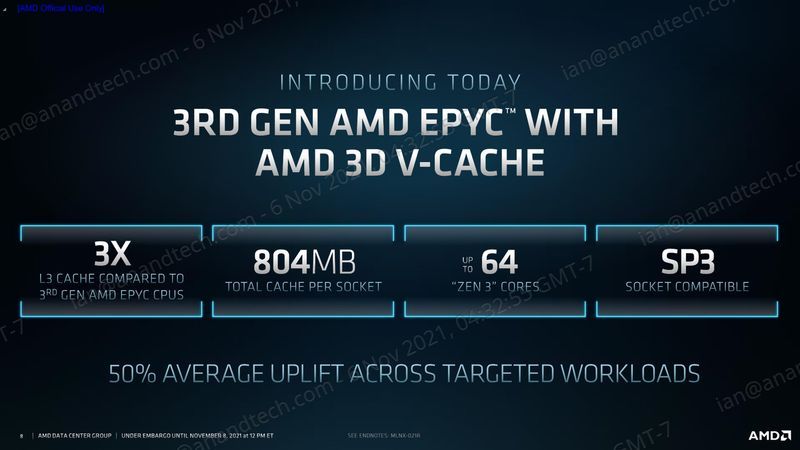The AMD Zen3 architecture upgrade is supported by 3D V-Cache technology. This solution makes it possible to increase the amount of L3 cache and achieve additional performance.
AMD Zen3 with 3D V-Cache will provide up to 66% improvement in computing performance
For those who don’t know what 3D V-Cache is, it is a new AMD solution for Zen architecture. It consists of a simple way to stack layers of L3 cache memory. This allows you to triple the amount of L3 cache memory for additional performance.
The first processors to integrate 3D V-Cache will be the AMD EPYC Milan-X processors. Specifically, these are the 64-core EPYC 7773X, the 32-core EPYC 7573X, the 24-core EPYC 7473X, and the 16-core EPYC. In the current models, the maximum L3 cache is 256 MB, but it is now increased up to 768 MB.
If we add the new amount of L3 cache to the 4 MB of L1 cache and the 32 MB of L2 cache, we get a total capacity of 804 MB of cache. That is a big increase in the cache.
The 3D-V cache memory is based on TSMC’s 7nm process. Each element has an area of 36 mm squared, so the L3 cache chip has a unique area of 80.7 mm squared. This represents an increase in the area of about 45%. Increasing the size of the L3 cache means increasing the manufacturing cost and consequently the price.
It is interesting that increasing the L3 cache decreases the dependence on the system memory (RAM) bandwidth. AMD has compared an EPYC Mila-X and an EPYC Milan with 16 cores, changing only the amount of cache. Synopsys VCS measured the amount of work required for EDA RTL verification. The result was a performance increase of up to 66%.
What do you think about the performance of an AMD Zen3 processor with 3D V-Cache compared to a processor without 3D V-Cache?
